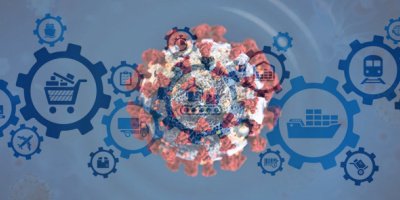If you read my article from two weeks ago, you know that IBM plans to leverage its technology initiatives to create a world where mid-market companies get their IT capacity from computing grids. What you may not know is that over the next several months, IBM will be grid-enabling the products you already use.
Let's start with your iSeries server. Right now, the iSeries has no ability to supply computing capacity to a grid. Once you upgrade to OS/400 V5R2, however, it will. A few weeks ago, IBM quietly announced that V5R2 will include the Globus Toolkit 2.0, a set of open-source products from the Globus Project that enable servers to participate in computing grids. IBM also revealed that it has connected iSeries servers to its internal research grid, known as BlueGrid, using the Globus Toolkit. Since IBM has a history of linking its AIX and Linux servers over grids, the computer giant plugged the iSeries into BlueGrid via logical partitions running OS/400 PASE (the AIX runtime environment) and Linux. This is also the way that most iSeries servers will participate in computing grids in the future, though direct links to OS/400 partitions may also be possible.
While IBM is embedding grid capabilities in all of its servers, its efforts extend beyond operating systems to middleware. At this moment, the company is working with the Globus Project to make the next version of the Globus Tool Kit (Version 3.0, or GTK 3) comply with the Java 2 Enterprise Edition (J2EE) specifications. At the same time, IBM and Globus will make GTK 3 comply with the Open Grid Services Architecture (OGSA), a set of specifications that integrate grid computing with Web services. Of course, IBM's WebSphere is the reference application server for these retooling efforts. When the Globus Project releases GTK 3 next year, IBM will ship a release of WebSphere Application Server that includes the toolkit. It will also embed GTK 3 in its servers, including the iSeries.
Why Is This So Important?
By now, I imagine that many of you are asking why you should care about the grid technologies that IBM is slipping under the covers of its products. There are two answers to that question. First, if you're going to link two or more applications using Web services, you'll probably want to use grid technologies. Second, IBM is going to combine Web services and grid technologies to offer its customers a computing utility that could radically change your job or, at worst, take it away.
Allow me to expand on my first answer. As companies start using Web services technologies such as XML and SOAP to enable communications between applications, they will encounter many challenges. For instance, how will an invoking application be assured that an invoked application will not go down during a transaction? How will an invoking application get guaranteed response times from an invoked application? While traditional distributed computing architectures address these and other session management issues, there are no similar standards that function well in the loosely coupled world of the Internet.
That's where GTK 3 with its OGSA compliance comes in. Put simply, GTK 3 will provide a basic set of tools for managing Web services transactions when they run across grids. Since Web services will run faster and more reliably over grids, there's a good chance that you'll want to use them if you use Web services. If you use Web services to integrate your internal systems, you may want to use GTK 3 to create a private grid for your company. If you extend those Web services to other firms, you may want to use a grid to link selected servers across corporate boundaries.
This leads to the second reason why you should care about grid computing. Once applications can invoke each over the Internet with the same performance, scalability, security, and reliability as if they were on a private network, all the old arguments about where to locate those applications become invalid. If it costs less to put applications on the Internet under the management of a computing utility, most small and mid-market companies will eventually opt for the utility instead of an in-house solution. That is why IBM is positioning itself to become the computing utility of choice for such firms. It believes that in a few years, most companies will trust grid-enabled Web services enough to buy them from computing utilities one transaction at a time, much as we buy electricity one kilowatt at a time.
While IBM will have to address many tough issues before it can gain that kind of trust, there is good reason to believe it will eventually succeed. Many other IT vendors--including Microsoft, Sun, and Hewlett-Packard/Compaq--are also integrating grid computing and Web services standards into their products. While these vendors are already jousting over grid computing standards much as they do over Web services standards, they all realize that their individual initiatives won't succeed without such common denominators. With so many industry giants backing grid computing as a supporting technology for Web services, chances are high that grids of all shapes and sizes will become commonplace.
If computing grids are in our future, every mid-market organization will have to decide whether it will create its own grid, supply computing capacity to another grid, or simply consume computing capacity from a grid. Unless your firm decides to stay "off the grid" like some self-reliant rural homesteader, your role as an IT professional will irrevocably change. That's why it will become increasingly important for every IT professional to understand grid computing. Like Web services, this is a technology that could make or break your career, not to mention change the way your company acquires IT solutions.
Lee Kroon is a Senior Industry Analyst for Andrews Consulting Group, a firm that helps mid-sized companies manage business transformation through technology. You can reach him at






















 More than ever, there is a demand for IT to deliver innovation. Your IBM i has been an essential part of your business operations for years. However, your organization may struggle to maintain the current system and implement new projects. The thousands of customers we've worked with and surveyed state that expectations regarding the digital footprint and vision of the company are not aligned with the current IT environment.
More than ever, there is a demand for IT to deliver innovation. Your IBM i has been an essential part of your business operations for years. However, your organization may struggle to maintain the current system and implement new projects. The thousands of customers we've worked with and surveyed state that expectations regarding the digital footprint and vision of the company are not aligned with the current IT environment. TRY the one package that solves all your document design and printing challenges on all your platforms. Produce bar code labels, electronic forms, ad hoc reports, and RFID tags – without programming! MarkMagic is the only document design and print solution that combines report writing, WYSIWYG label and forms design, and conditional printing in one integrated product. Make sure your data survives when catastrophe hits. Request your trial now! Request Now.
TRY the one package that solves all your document design and printing challenges on all your platforms. Produce bar code labels, electronic forms, ad hoc reports, and RFID tags – without programming! MarkMagic is the only document design and print solution that combines report writing, WYSIWYG label and forms design, and conditional printing in one integrated product. Make sure your data survives when catastrophe hits. Request your trial now! Request Now. Forms of ransomware has been around for over 30 years, and with more and more organizations suffering attacks each year, it continues to endure. What has made ransomware such a durable threat and what is the best way to combat it? In order to prevent ransomware, organizations must first understand how it works.
Forms of ransomware has been around for over 30 years, and with more and more organizations suffering attacks each year, it continues to endure. What has made ransomware such a durable threat and what is the best way to combat it? In order to prevent ransomware, organizations must first understand how it works. Disaster protection is vital to every business. Yet, it often consists of patched together procedures that are prone to error. From automatic backups to data encryption to media management, Robot automates the routine (yet often complex) tasks of iSeries backup and recovery, saving you time and money and making the process safer and more reliable. Automate your backups with the Robot Backup and Recovery Solution. Key features include:
Disaster protection is vital to every business. Yet, it often consists of patched together procedures that are prone to error. From automatic backups to data encryption to media management, Robot automates the routine (yet often complex) tasks of iSeries backup and recovery, saving you time and money and making the process safer and more reliable. Automate your backups with the Robot Backup and Recovery Solution. Key features include: Business users want new applications now. Market and regulatory pressures require faster application updates and delivery into production. Your IBM i developers may be approaching retirement, and you see no sure way to fill their positions with experienced developers. In addition, you may be caught between maintaining your existing applications and the uncertainty of moving to something new.
Business users want new applications now. Market and regulatory pressures require faster application updates and delivery into production. Your IBM i developers may be approaching retirement, and you see no sure way to fill their positions with experienced developers. In addition, you may be caught between maintaining your existing applications and the uncertainty of moving to something new. IT managers hoping to find new IBM i talent are discovering that the pool of experienced RPG programmers and operators or administrators with intimate knowledge of the operating system and the applications that run on it is small. This begs the question: How will you manage the platform that supports such a big part of your business? This guide offers strategies and software suggestions to help you plan IT staffing and resources and smooth the transition after your AS/400 talent retires. Read on to learn:
IT managers hoping to find new IBM i talent are discovering that the pool of experienced RPG programmers and operators or administrators with intimate knowledge of the operating system and the applications that run on it is small. This begs the question: How will you manage the platform that supports such a big part of your business? This guide offers strategies and software suggestions to help you plan IT staffing and resources and smooth the transition after your AS/400 talent retires. Read on to learn:
LATEST COMMENTS
MC Press Online